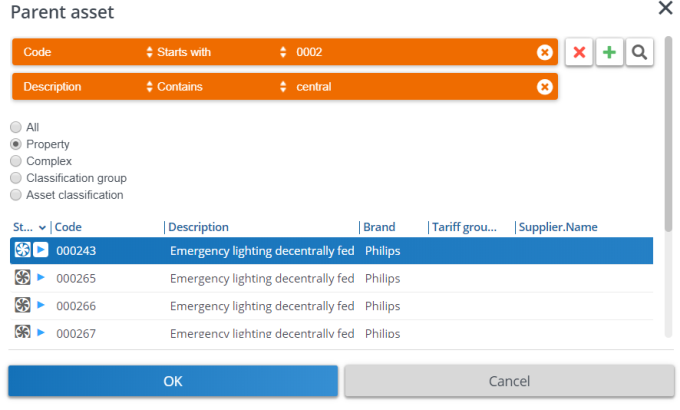Specifying dependency between assets
You can link two assets and specify which one of them is dependent on the other.
Procedure
1. Go to Asset details.
2. On either the Parent assets or Dependent assets selection step, click Add.
3. In the Parent asset and Dependent asset fields, click the Select a value button and select the relevant assets.
The dialog boxes have extensive filtering options that allow you to search for assets by specifying conditions on various search fields.
For example, you can specify to only show assets with a Description that Contains the term 'central'. You can also add or remove search fields by clicking the Add search field and Remove search field buttons within the dialog box.
For example, you can specify to only show assets with a Description that Contains the term 'central'. You can also add or remove search fields by clicking the Add search field and Remove search field buttons within the dialog box.

You can use the options Property, Complex, Classification group and Asset classification to further filter the list of assets displayed by filtering them according to elements to which the asset selected in your drill-down path is already assigned to.
For example, to only see assets that belong to the same property as the currently selected asset, select Property. To only see assets that belong to the same building complex as the currently selected asset, select Complex. Selecting All means no filtering.
4. Click Save to link the two assets according to the defined dependency.
Depending on the currently selected step (Parent assets or Dependent assets) the parent asset or the dependent asset then appears in the elements list.
If you already selected an asset before drilling down to the Parent assets selection step, clicking Add causes the selected asset to automatically appear in the Dependent asset field.
Similarly, if you already selected an asset before going to the Dependent assets selection step, clicking Add causes the selected asset to automatically appear in the Parent asset field.